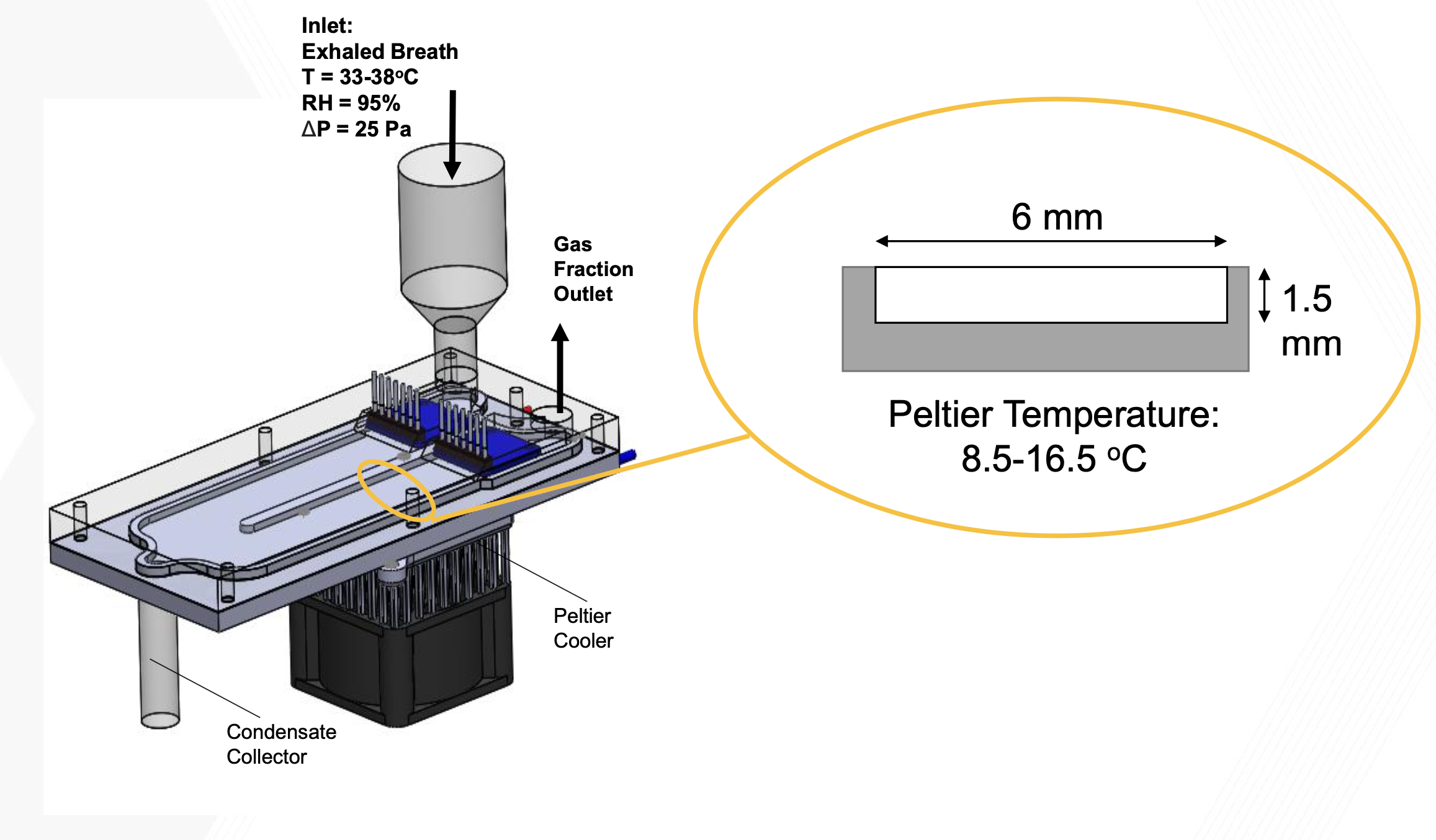This new miniature breath collection device is designed to efficiently and effectively detect disease biomarkers from a variety of conditions such as asthma, lung cancer, and diabetes. Unlike existing breath extraction devices that target either the gas or liquid molecules within breath, this new design collects and separates both phases to potentially provide a more multifaceted diagnosis. By cooling the water vapor collected with the breath sample, this device from Georgia Tech separates moisture from the gas phase and channels each phase to their respective collection ports. Both the gas and the liquid can then be analyzed by gas chromatograph, liquid chromatography, and other methods.
By collecting both gas and liquid phase samples, this new breath collection device provides a more robust and efficient tool for diagnostics while minimizing discomfort for the patient—which is particularly important for children and the elderly.
- Improved diagnosis: Analyzes both the gas and liquid sampled from the patient’s breath for potentially more robust and multifaceted results
- Enhanced patient experience: Requires a shorter exhalation cycle to get a breath sample, making the test more comfortable for patients
- Small and portable: Optimizes and miniaturizes the collection process for easy point-of-care applications
- Efficient design: Leverages easy-to-clean materials in a miniaturized device for improved hygiene and reduced cost
- Noninvasive health diagnostics for detecting disease biomarkers
- Allergic asthma
- Detection of markers indicating oxidative stress
- Chemometric study for cystic fibrosis
- Breath analysis for volatile components
- Veterinary medicine
Breath analysis is a promising form of non-invasive health diagnosis. Studies have found that the traces of certain organic compounds presented in exhaled breath can be biomarkers for diseases. There are two breath collection methods that are commonly used in practice. One method collects the gas phase for analyzing volatile organic compounds (VOCs), while the other collects the liquid phase for analyzing exhaled breath condensate (EBC).
In both methods, it is important to effectively extract water vapor from the breath sample. In the gas phase collection, high moisture content in the breath sample can have adverse effects on measuring the VOC concentration. In the liquid phase collection, effective water extraction is necessary to reduce the EBC collection time. Extracting more water vapor from the gas sample reduces the exhalation time needed to provide a sufficient sample.
This Georgia Tech team has developed a miniaturized sampling system that provides efficient collection of breath condensate and a preconcentrated sample of VOCs. Researchers have created a multi-physics mathematical model to perform simulations that has enabled them to optimize and improve the design. This optimization creates a reliable handheld device that is robust, portable, low cost, and requires only standard power.

Diagram of the breath analyzer indicating the sensors for inlet temperature, humidity, carbon dioxide, flow rate of the breath sample, as well as exit temperature and humidity levels

This illustration shows the dimensions of the device’s channel and the Peltier cooler module attached to the channel with a temperature ranging from 8.5 to 16.5 ˚C.
